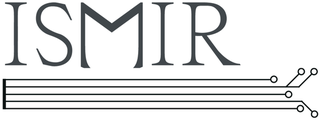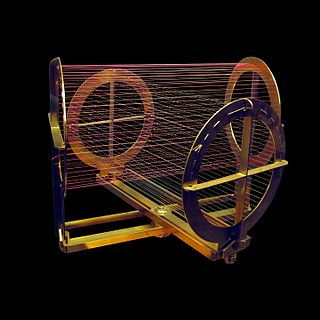
Phonics is a method for teaching reading and writing to beginners. To use phonics is to teach the relationship between the sounds of the spoken language (phonemes), and the letters (graphemes) or groups of letters or syllables of the written language. Phonics is also known as the alphabetic principle or the alphabetic code. It can be used with any writing system that is alphabetic, such as that of English, Russian, and most other languages. Phonics is also sometimes used as part of the process of teaching Chinese people to read and write Chinese characters, which are not alphabetic, using pinyin, which is.
A teaching method is a set of principles and methods used by teachers to enable student learning. These strategies are determined partly on subject matter to be taught and partly by the nature of the learner. For a particular teaching method to be appropriate and efficient it has take into account the learner, the nature of the subject matter, and the type of learning it is supposed to bring about.
The Association of College and Research Libraries defines information literacy as a "set of integrated abilities encompassing the reflective discovery of information, the understanding of how information is produced and valued and the use of information in creating new knowledge and participating ethically in communities of learning". In the United Kingdom, the Chartered Institute of Library and Information Professionals' definition also makes reference to knowing both "when" and "why" information is needed.
Educational assessment or educational evaluation is the systematic process of documenting and using empirical data on the knowledge, skill, attitudes, aptitude and beliefs to refine programs and improve student learning. Assessment data can be obtained from directly examining student work to assess the achievement of learning outcomes or can be based on data from which one can make inferences about learning. Assessment is often used interchangeably with test, but not limited to tests. Assessment can focus on the individual learner, the learning community, a course, an academic program, the institution, or the educational system as a whole. The word "assessment" came into use in an educational context after the Second World War.
Library collection development is the process of systematically building the collection of a particular library to meet the information needs of the library users in a timely and economical manner using information resources locally held as well as resources from other organizations. "According to is a dynamic self perpetuation cycle or process and consists six definable stages namely,community analysis, selection policies, selection, acquisition, weeding and evaluation.
Accelerated Reader is a website used to assist students with reading skills. It is a digital program aiming to help students and teachers manage and monitor independent reading practice in English and Spanish. Students pick a book at their own level and read it at their own pace. When a student finish their book, they take a short quiz on the computer to check their understanding. As students read and take quizzes, they receive points depending on the book's reading level. The more difficult the book is, the more points the students receive. AR also tracks the students' progress towards their individualized Accelerated Reader goals.

A school library is a library within a school where students, staff, and often, parents of a public or private school have access to a variety of resources. The goal of the school library media center is to ensure that all members of the school community have equitable access "to books and reading, to information, and to information technology." A school library media center "uses all types of media... is automated, and utilizes the Internet [as well as books] for information gathering." School libraries are distinct from public libraries because they serve as "learner-oriented laboratories which support, extend, and individualize the school's curriculum... A school library serves as the center and coordinating agency for all material used in the school."

Digital literacy is an individual's ability to find, evaluate, and communicate information using typing or digital media platforms. It is a combination of both technical and cognitive abilities in using information and communication technologies to create, evaluate, and share information.
Library instruction, also called bibliographic instruction, user education and library orientation, consists of "instructional programs designed to teach library users how to locate the information they need quickly and effectively. [It] usually covers the library's system of organizing materials, the structure of the literature of the field, research methodologies appropriate to the academic discipline, and specific resources and finding tools " It prepares individuals to make immediate and lifelong use of information effectively by teaching the concepts and logic of information access and evaluation, and by fostering information independence and critical thinking. Above all they are aimed at equipping library users with skills to locate library sources and use them effectively to satisfy their information needs.
Inquiry-based learning is a form of active learning that starts by posing questions, problems or scenarios. It contrasts with traditional education, which generally relies on the teacher presenting facts and their knowledge about the subject. Inquiry-based learning is often assisted by a facilitator rather than a lecturer. Inquirers will identify and research issues and questions to develop knowledge or solutions. Inquiry-based learning includes problem-based learning, and is generally used in small-scale investigations and projects, as well as research. The inquiry-based instruction is principally very closely related to the development and practice of thinking and problem-solving skills.

The Pacific Northwest tree octopus is an Internet hoax created in 1998 by a humor writer under the pseudonym Lyle Zapato. Since its creation, the Pacific Northwest tree octopus website has been commonly referenced in Internet literacy classes in schools and has been used in multiple studies demonstrating children's gullibility regarding online sources of information.
Library anxiety refers to the "feeling that one’s research skills are inadequate and that those shortcomings should be hidden". In some students this manifests as an outright fear of libraries and the librarians who work there. The term stems from a 1986 article by Constance Mellon, a professor of library science in the U.S. state of North Carolina, titled "Library anxiety: A grounded theory and its development" in the College & Research Libraries journal.

Transliteracy is "a fluidity of movement across a range of technologies, media and contexts". It is an ability to use diverse techniques to collaborate across different social groups.

Information and media literacy (IML) enables people to show and make informed judgments as users of information and media, as well as to become skillful creators and producers of information and media messages. IML is a combination of information literacy and media literacy. The transformative nature of IML includes creative works and creating new knowledge; to publish and collaborate responsibly requires ethical, cultural and social understanding.
A virtual school library is a PreK-12 library that is a subunit of a virtual school—using the same telecommunications network to provide equitable access to electronic resources and communication designed to support the school's curriculum.

Evidence-based education (EBE) is the principle that education practices should be based on the best available scientific evidence, rather than tradition, personal judgement, or other influences. Evidence-based education is related to evidence-based teaching, evidence-based learning, and school effectiveness research. For example, research has shown that spaced repetition "leads to more robust memory formation than massed training does, which involves short or no intervals".

The International Society for Music Information Retrieval (ISMIR) is an international forum for research on the organization of music-related data. It started as an informal group steered by an ad hoc committee in 2000 which established a yearly symposium - whence "ISMIR", which meant International Symposium on Music Information Retrieval. It was turned into a conference in 2002 while retaining the acronym. ISMIR was incorporated in Canada on July 4, 2008.
The S.U.R.E. Campaign is an information literacy awareness campaign initiated by the National Library Board (NLB) of Singapore. In Singapore, the NLB drives the information literacy awareness for the nation.
Project Information Literacy (PIL) is a research institute that conducts national, ongoing scholarly studies on how early adults find and use information as they progress through, and beyond, their higher education years.

Instructional material, also known as teaching/learning materials (TLM), are any collection of materials including animate and inanimate objects and human and non-human resources that a teacher may use in teaching and learning situations to help achieve desired learning objectives. Instructional materials may aid a student in concretizing a learning experience so as to make learning more exciting, interesting and interactive. They are tools used in instructional activities, which include active learning and assessment. The term encompasses all the materials and physical means an instructor might use to implement instruction and facilitate students achievement of instructional objectives.








